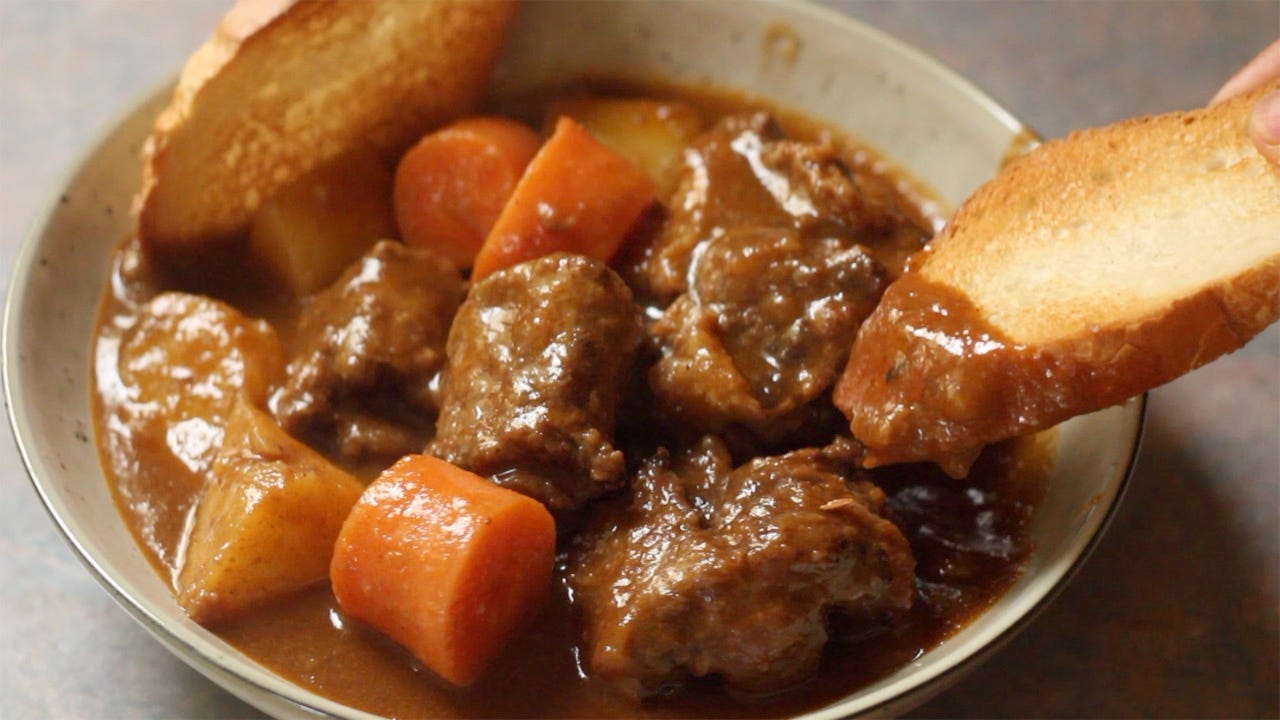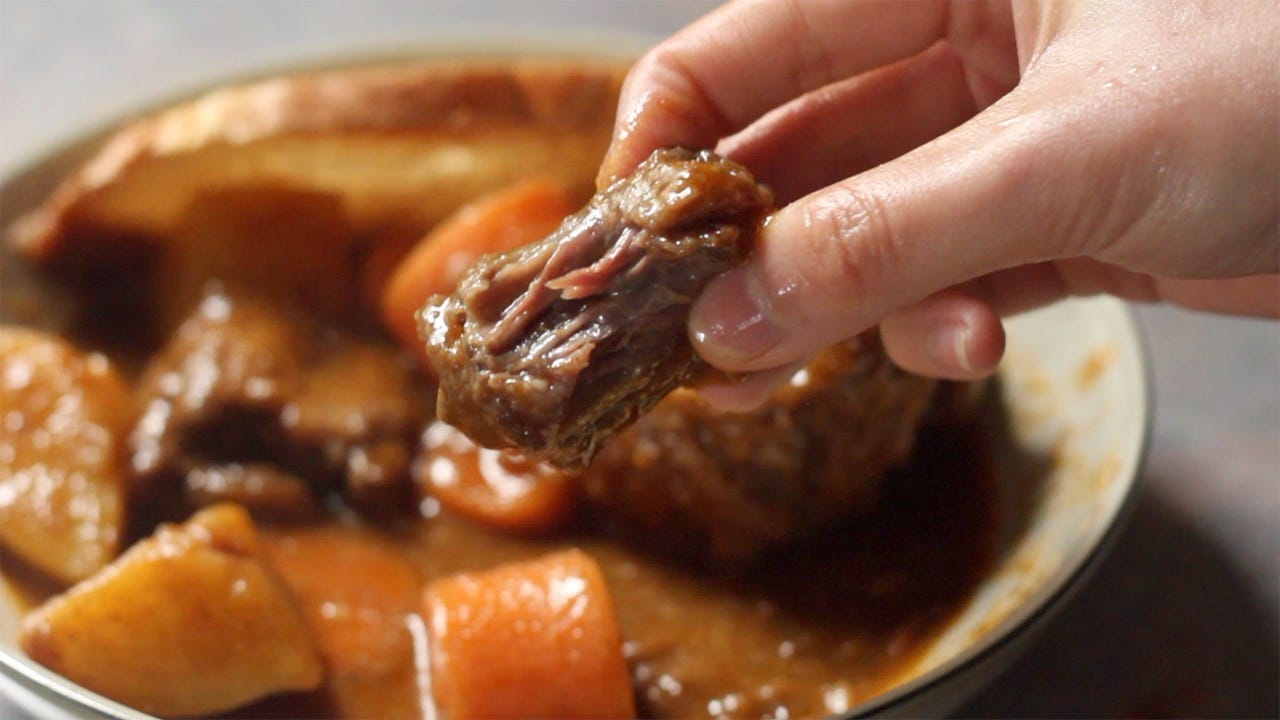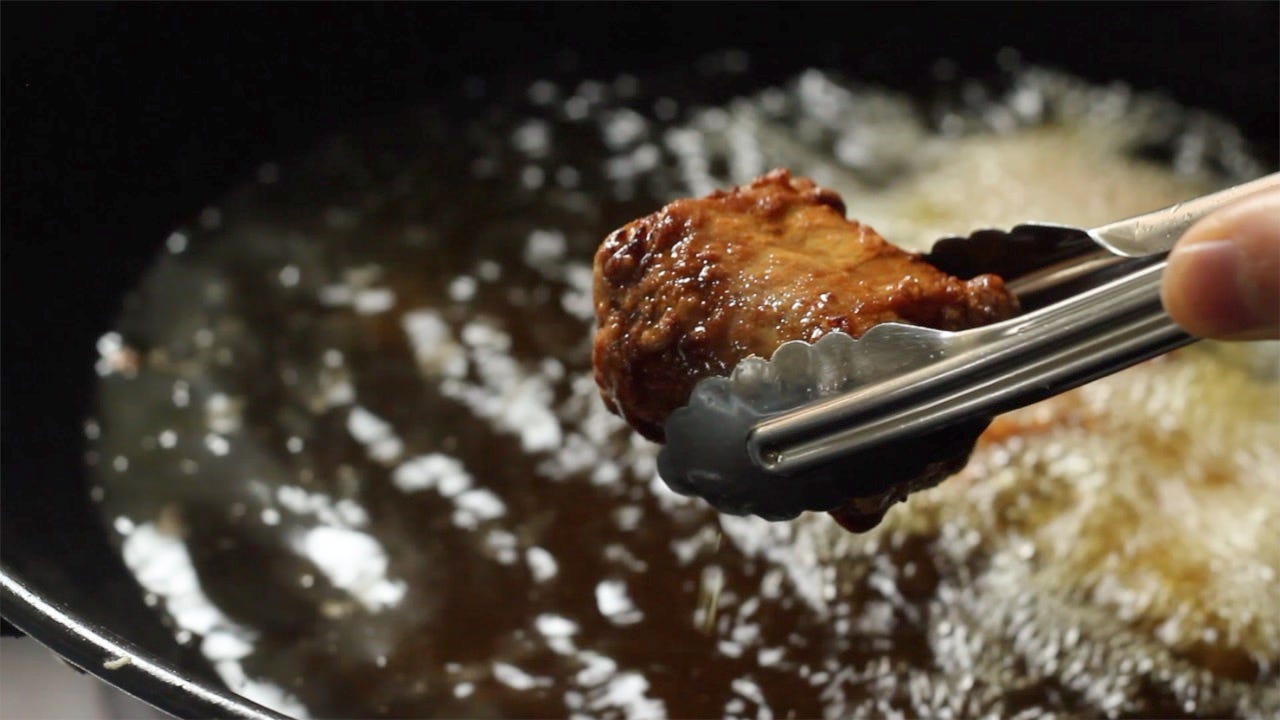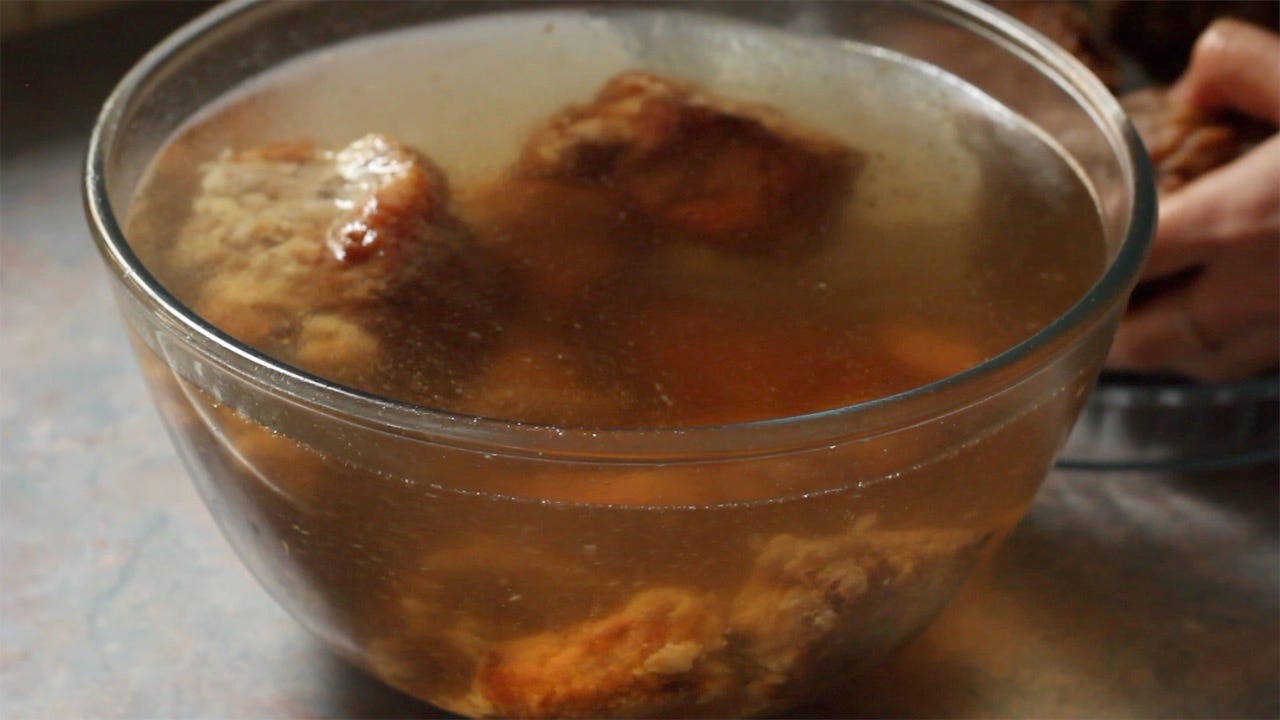On oxtail stew
My mother has never been one to fuss over complicated recipes. Her repertoire comprises of simple dishes that involve few ingredients - very true to her Cantonese heritage, I suppose. One of the dishes she used to make once a week for dinner was oxtail stew - it was a real treat for us, we definitely didn’t get to eat beef on a regular basis back then. It was a simple braise of beef, carrots, and potatoes in a light gravy flavoured with soy sauce and ginger. Mom never cooked the oxtail till the meat was falling apart - it was always braised just up to the point where the meat was tender, but still clung onto the bone. It invited you to pick it up and gnaw on the bones until they were utterly clean, like a drumstick. That is still how I enjoy my oxtail today, and why I believe that oxtail is something that is especially suited for home-cooking and private indulgence.
I wanted to try something different from my mother’s clean-tasting version, and started looking up oxtail stews served at Hainanese restaurants. These actually look very Western, but the flavours are quite local with the use of spices and soy sauce as seasoning. While it is more common to use dark soy sauce as a marinade for the oxtail, I marinated mine in kecap manis, something I picked up from Damian D’ Silva’s Eurasian smore recipe.
Something else that I noticed was how the chefs coated the marinated oxtail in flour before deep-frying. This is such a classic Chinese technique - deep-frying before cooking something in a sauce, or braising. You see it in dishes like sweet and sour pork, where marinated and deep-fried pork are tossed in a pan with gravy to glaze. The dim sum classic of steamed phoenix claws involves the deep-frying of chicken feet, soaking them in water, then braising. You even see it in kong bak bao, where traditionally, pork belly is deep-fried until the skin puffs and blisters, before steam-braised.
In oxtail stew, I suppose the purpose of deep-frying the oxtail is to allow for a good sear - without coating in flour and deep-frying, the marinade on the oxtail might result in the beef steaming rather than browning. It also is a more effective and quicker way to brown all sides of the beef.
After deep-frying, I soaked the beef cubes in water just, which is so counterintuitive - why would you make something crisp, then render it soggy? The beef is to be braised, so it’d turn soggy either way, but the key here is to soften the crust before it goes into the braise, so that it sponges up the flavourful liquid. It also gets rid of excess oil from the deep-frying and allow for a ‘cleaner’ taste when the beef is braised in the gravy, something the chef from British Hainan talks about in an interview. Look at how much oil and grime comes out of the deep-fried beef when soaked in water for just 10 minutes (the water is discarded):
This same Hainanese chef spoke about how his teacher had diabetes, and started using sweet potatoes to sweeten the stew instead of sugar. It gave the dish such a lovely rounded flavour that he stuck to it. The thought of it intrigued me so much that I added mashed sweet potatoes to the gravy, though it probably isn’t a conventional ingredient to add for most Hainanese cooks.
It’s been raining a whole lot here where we live, and this was so comforting, especially with the spices (cloves, pepper, nutmeg, cinnamon) that always bring Christmas to mind. We had this with toasted baguette the first day, with some snipped chilli padi on the side. The Eurasians would serve this with sambal belacan. The combination of East and West in this dish was so reminiscent of yoshoku food (Western-influenced Japanese cooking) that the next day, we enjoyed this with Japanese rice, some daikon pickle, a side salad, and some miso soup.
Hainanese Oxtail Stew
Based on the oxtail stew at Mariners Corner and British Hainan









